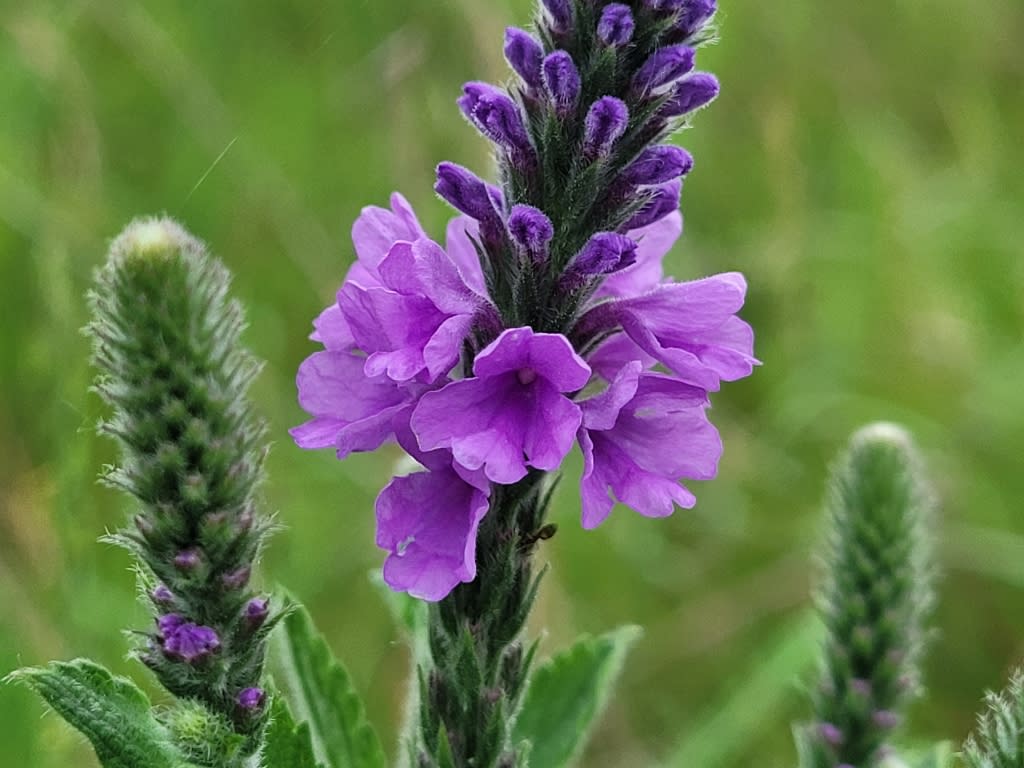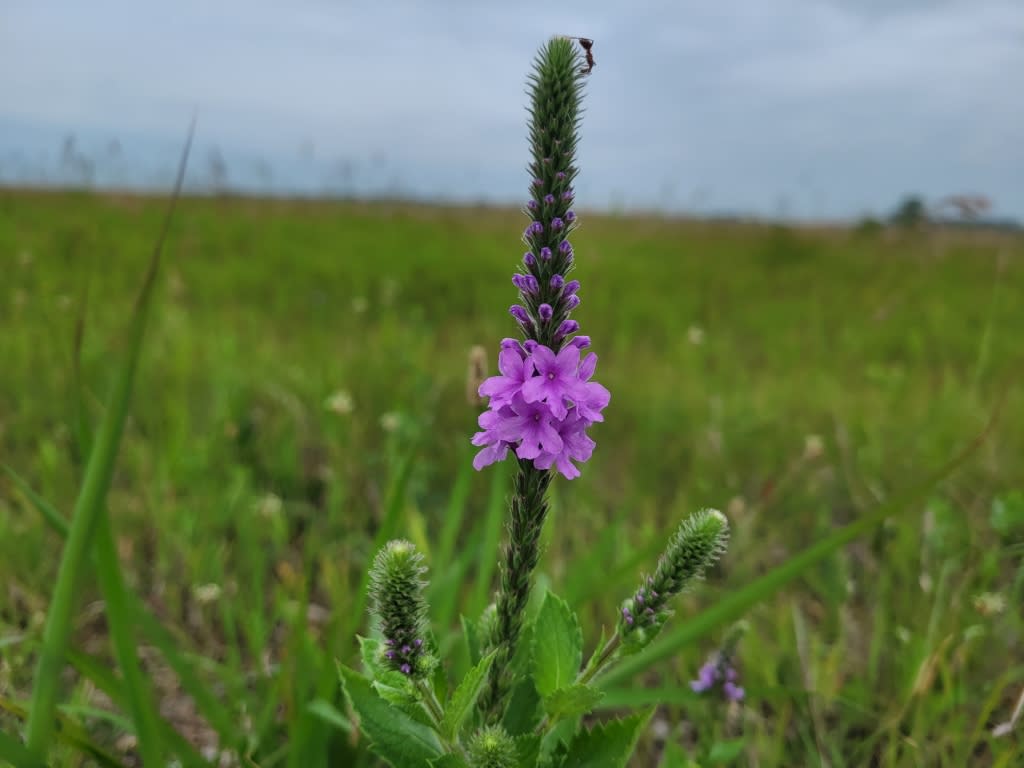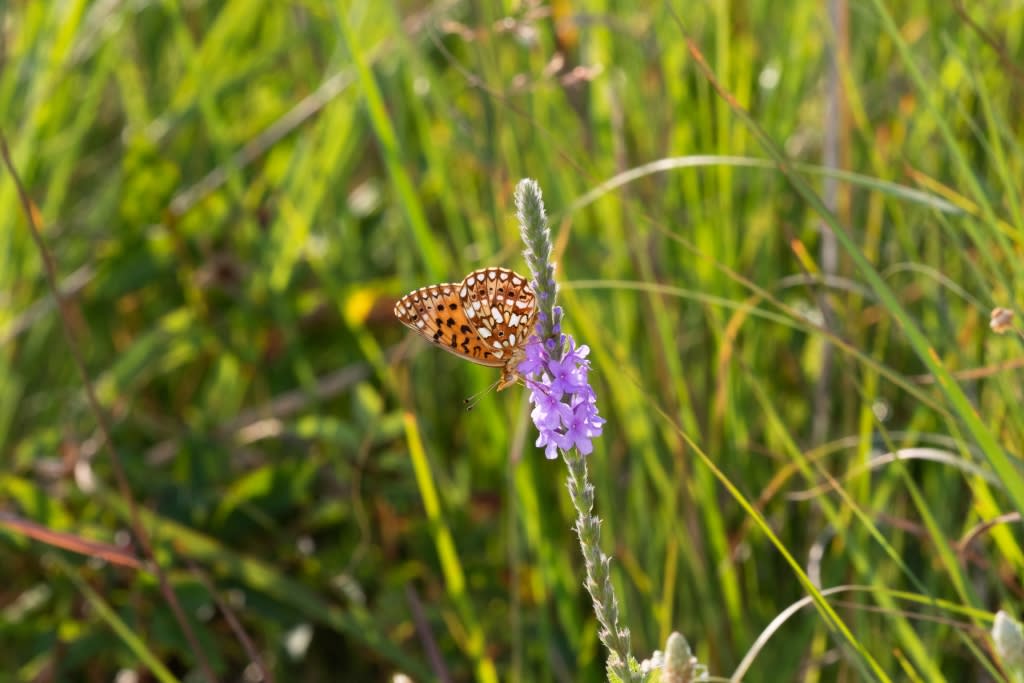I overlook things all the time – but insects don’t.
I walk, bike, and drive the roadsides of Kankakee Sands every day, nearly oblivious to the thousands of hoary vervain (Verbena stricta) that I am passing. But the insects are keyed in—they know that this plant is a treasure.
Hoary vervain grows in dry, sandy, or gravely soils in oak savannas and in prairies. It is an early colonizer – growing in recently disturbed areas with bare ground, and it seems to have a particular fondness for growing along roadsides.

Hoary vervain in bloom. Photo by A.Nyberg/TNC
In natural settings, you’ll typically find hoary vervain growing with other such native plants as round-headed bush clover, spotted horse-mint, sand evening primrose, and prickly pear cactus.
Hoary vervain gets its name from the hairy stem and leaves, which have an overall grey-green appearance. This two-foot tall plant has oval, four-inch long, three-inch wide leaves with serrated edges that alternate up the stem.
From the top of the stem stretch one to three flowering stalks that are one to eight inches in length. In July and August, the flowers will begin to open, first from the base of the stalk, and work their way upwards. The small, lavender, nectar-filled flowers attract a wide variety of six-legged creatures such as butterflies, bees, and even ants!

Hoary vervain in bloom with an ant at the tip of the flowering stalk. Photo by A.Nyberg/TNC
Hoary vervain is a fantastic nectar source. Monarch butterflies, the rare silver-boarded fritillary, and the state-endangered regal fritillary butterfly have all been seen nectaring on hoary vervain flowers at Kankakee Sands.
In addition to butterflies, bees also nectar on this roadside beauty. Laura Rericha-Anchor, Wildlife Botanist with the Forest Preserve District of Cook County, has documented thirty-five bee species that visit the flowers for nectar. Hoary vervain also attracts ants and even the ruby-throated hummingbirds, too!
The flowers aren’t the only desirable parts of the hoary vervain from an insects’ perspective. Caterpillars of the common buckeye butterfly feed solely on leaves of hoary vervain—no other plant will do for the buckeye caterpillar.
And if all this weren’t enough, it turns out that hoary vervain is a great landscaping plant. It is short, stout, drought-tolerant, and not preferred by wildlife due to its hairiness and bitter taste. (We do in fact see an abundance of hoary vervain in both the cattle and bison pastures at Kankakee Sands.)

Silver borded fritillary on verbena stricta Photo by Kathy Malone
This small, short-lived perennial of a plant is surely not one to be overlooked for your own landscaping, gardens, and natural areas. It’s a real crowd-pleaser, not only for people but for insects too!
If you are interested to incorporate hoary vervain, and other native plants into your property, consider reaching out to a local nursery that sells native plants. The Indiana Native Plant Society has a fantastic interactive map on their website that shows the nurseries in Indiana that sell native plants. https://indiananativeplants.org/landscaping/where-to-buy/ Check it out!
The Nature Conservancy’s Kankakee Sands is an 8,300-acre prairie and savanna habitat in Northwest Indiana, open every day of the year for public enjoyment. For more information about Kankakee Sands, visit www.nature.org/KankakeeSands or call the office at 219-285-2184.

